Tongyeong Travel
About Tongyeong
Located in the Southern part of the Korean Peninsula, Tong-yeong is short for 삼도수군통제영, which means navy headquarters for three provinces, quite literally. The city carries with it other meanings too, as it was the headquarters for one of the most renowned navy heroes Admiral Yi, and somehow Tong-yeong is also home to great artists, novelists, and master craftsmen too. At this point you've got to be a bit curious how this greatness came to be. Maybe it’s something about being surrounded by the water and feeling the breeze? Most of the past glory has gone though, and now Tong-yeong is more known for its oysters as a passing stop en route to Busan, Yeosu, and Goe-je Island (거제도)
What we did
The sightseeing:
통제영: (Tong Jae Yong): The HQ building for the navy and where the 세병관 (Sae Byeong Gwan) is located. It’s nothing impressive, but one the we though was actually cool was how we could step into a historical building, the 세병관, and gaze at the ocean view. It was also where the original craft workshops were located in the past. Now the 12 공방 or workshops function as museums where bad elevator music plays.
Pro Tip! From May until December, every weekend from 13:00 to 17:00, the real craftsmen showcase their crafts, offering demonstrations and workshops you can attend.
강구안거북선체험장 (Turtle ships port): The turtle ship motif is heavy handed in Tong-yeong. It’s the battleship that was Admiral Yi’s secret weapon that lead him to his victories. The turtle ship is everywhere: it’s on the sewage drain hole cover, there is a hotel named after it, and there are miniature turtle ships at most of the historical monuments. At least once you will come across it elsewhere, so we do not recommend actually going to the dock to see the replicas unless you’re really into naval history. It’s quite fascinating in the context of naval history and engineering, but for most people we recommend skipping this place.
충렬사 (Cheongyeolsa): If you would like to commemorate Admiral Yi, this is the best place. It's peaceful and quiet. There is also a mini museum where you can see Admiral Yi’s belongings and diaries of his battles.
전혁림 미술관: (Jeon Hyuck Lim Art Gallery): We won't recommend this part of the trip. It's not that remarkable and not easy to enjoy out of context if you are not that into Jeon's work or his style of art.
달아 공원 (Dara Park): This is a famous spot for sunrise and sunset. It was pretty nice but if you are going in the winter, dress warm and be prepared.
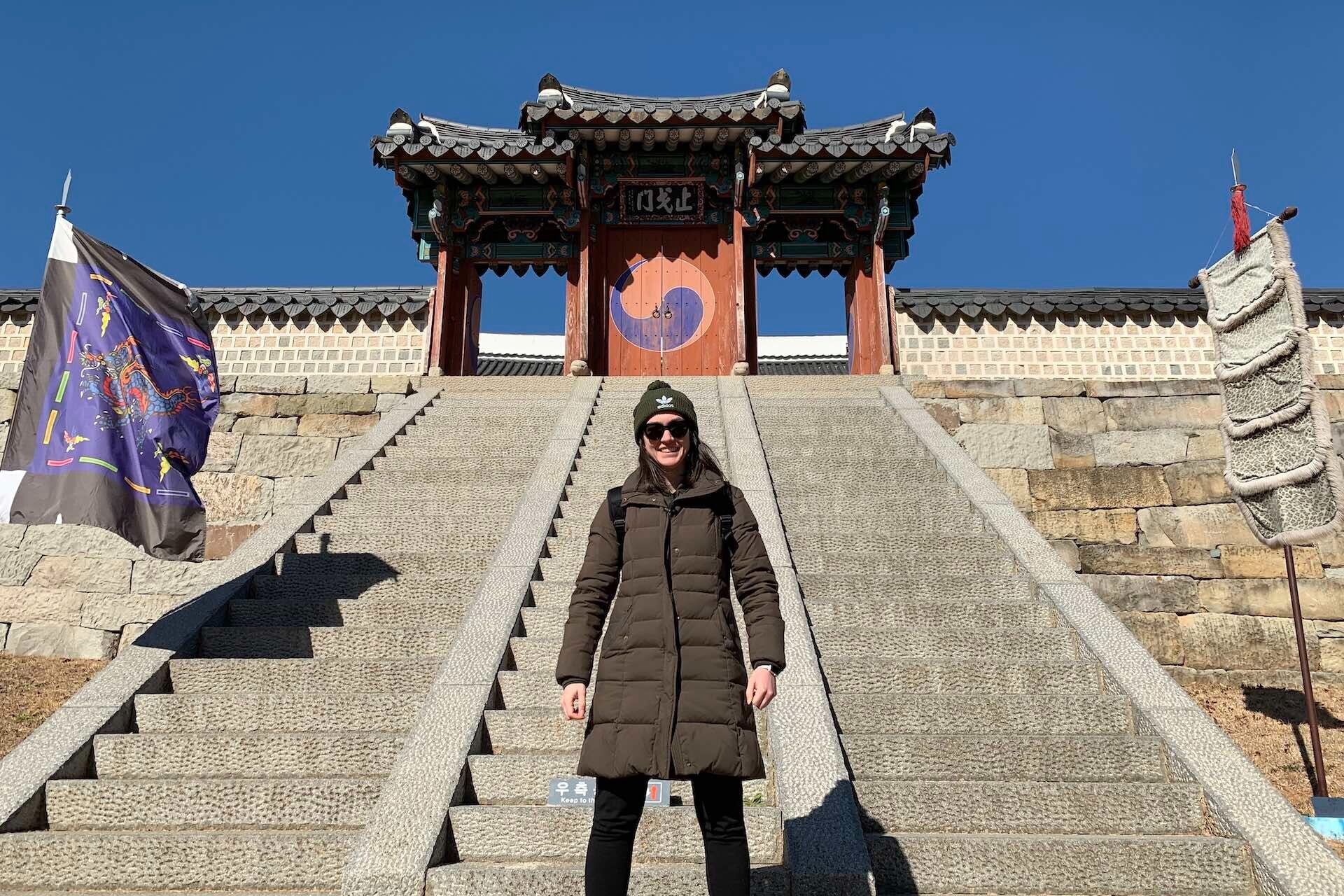

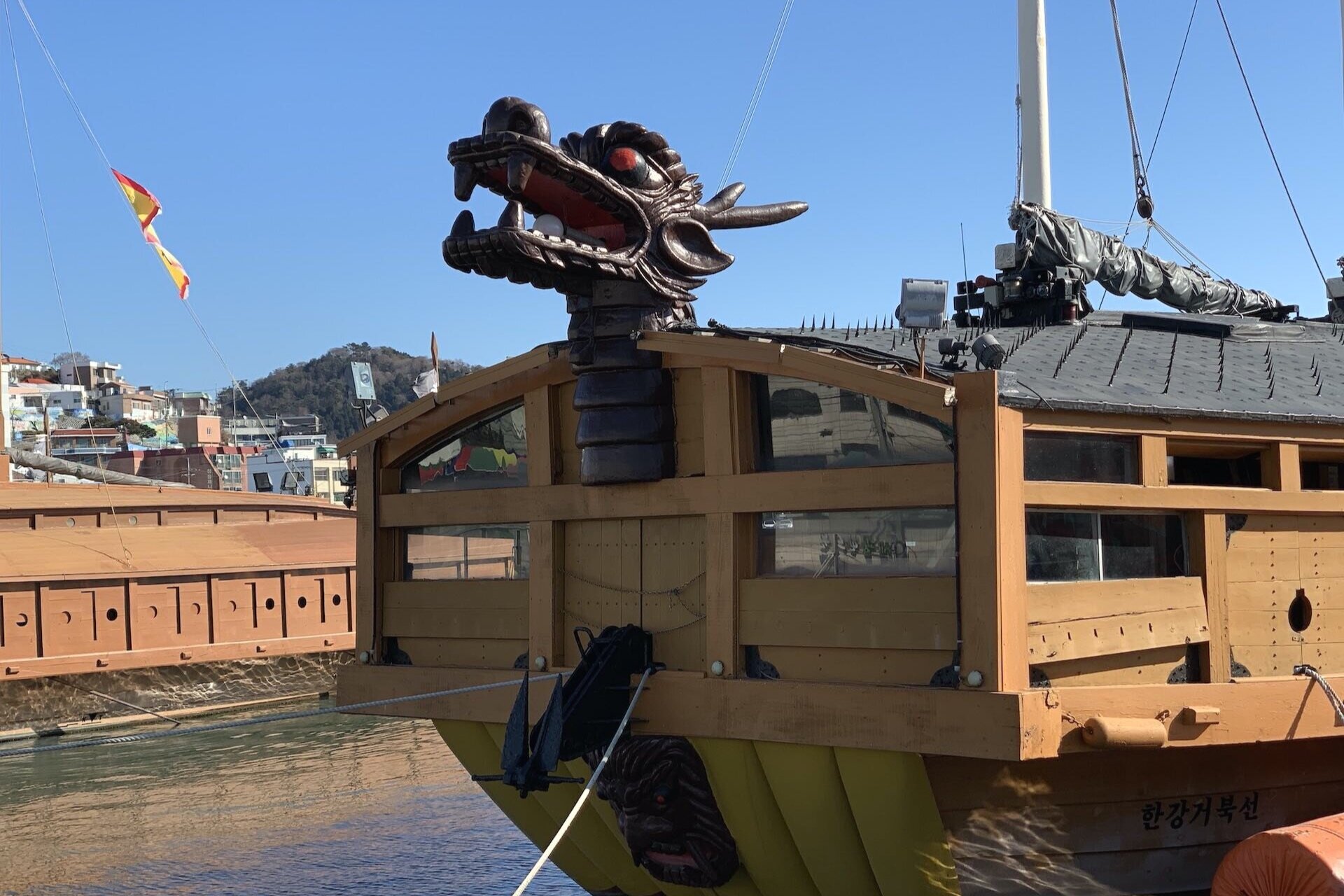
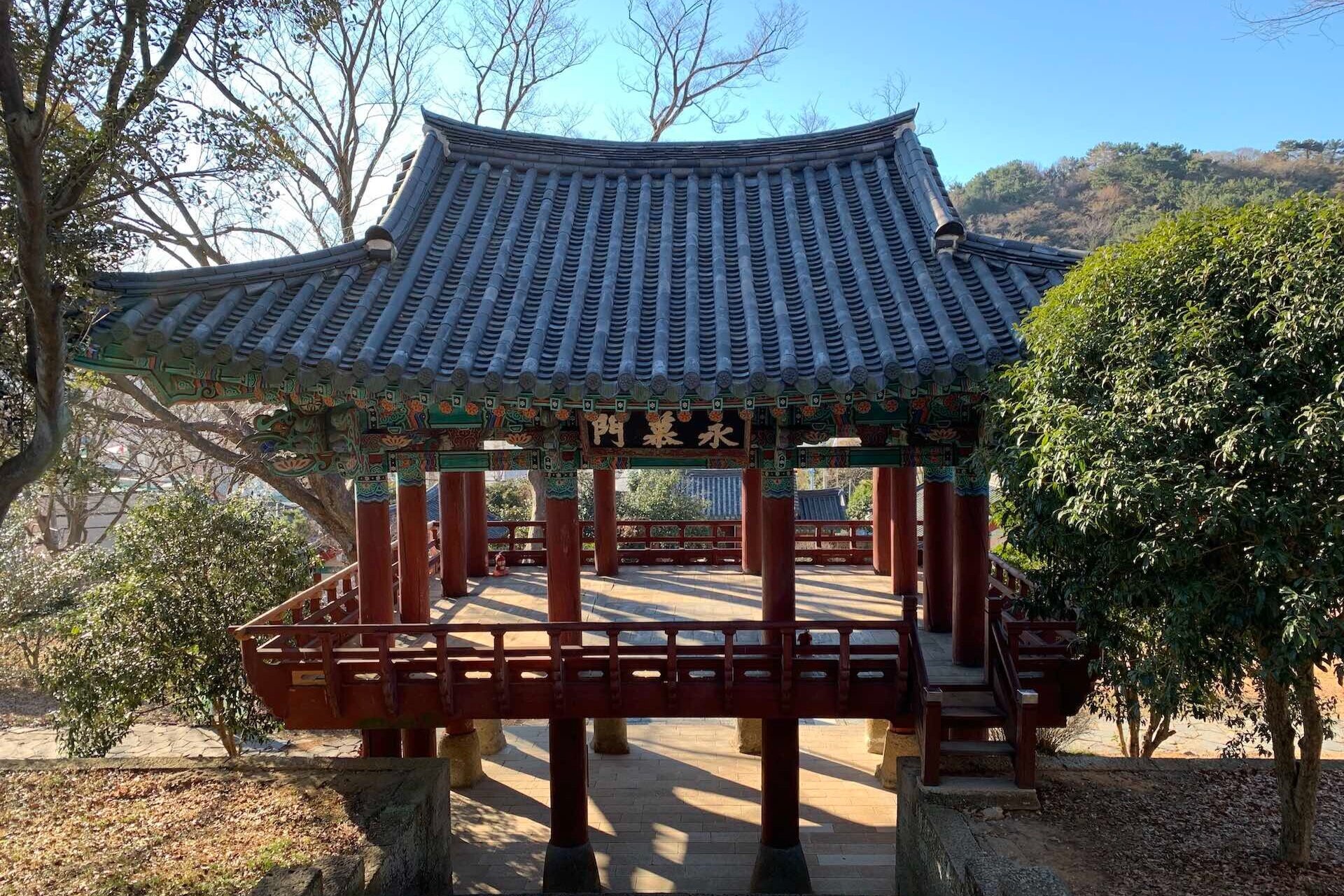
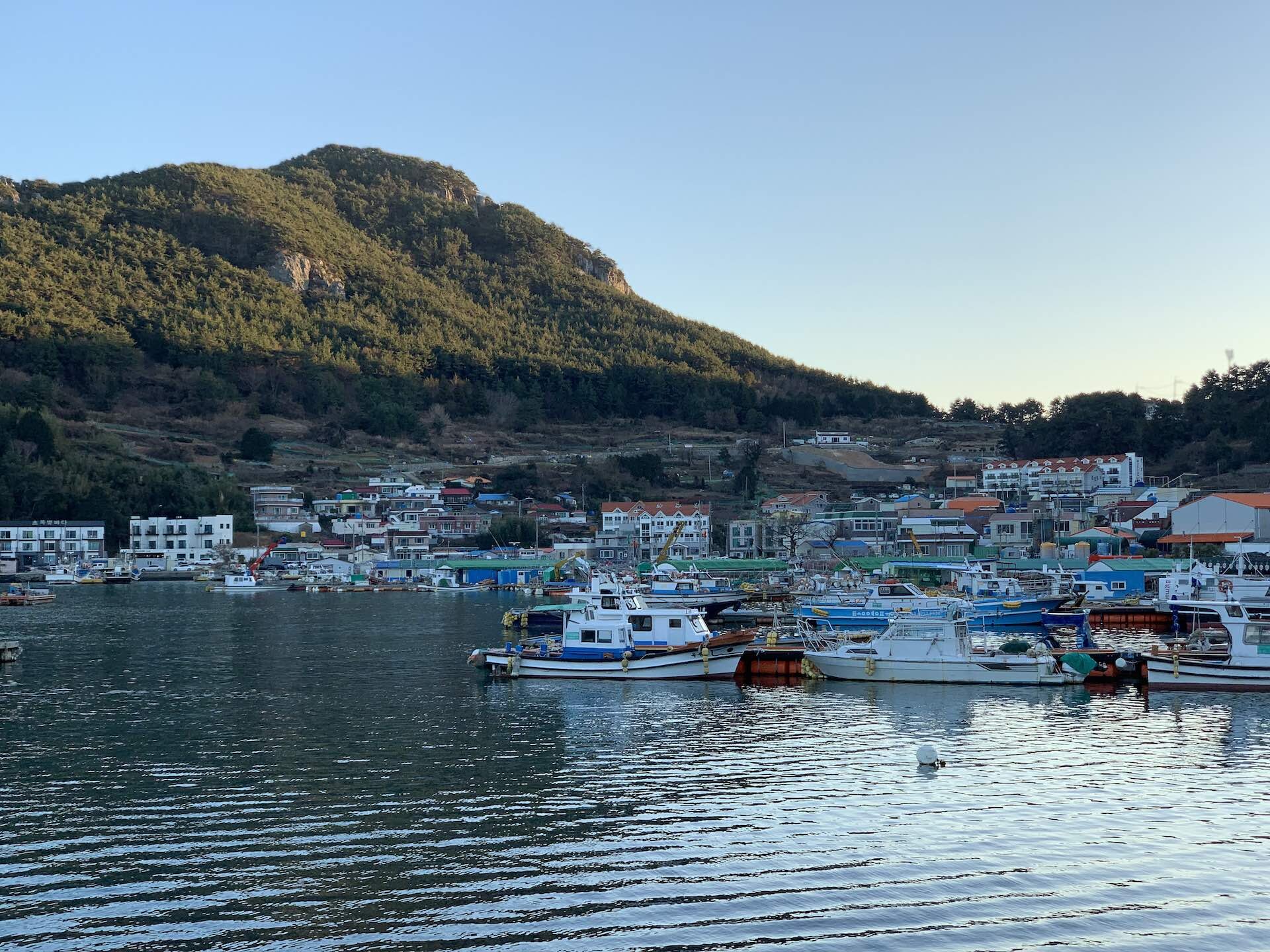
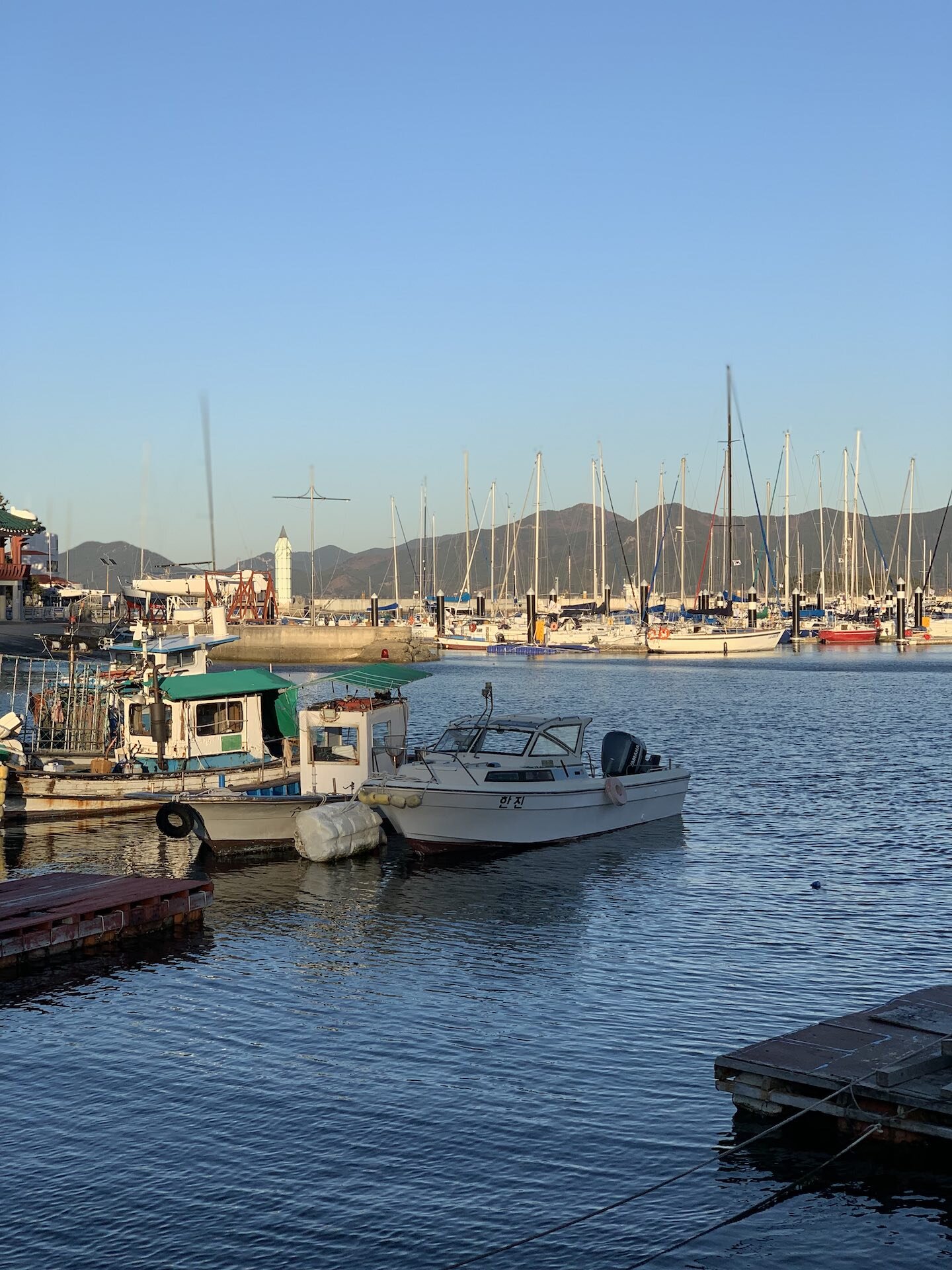
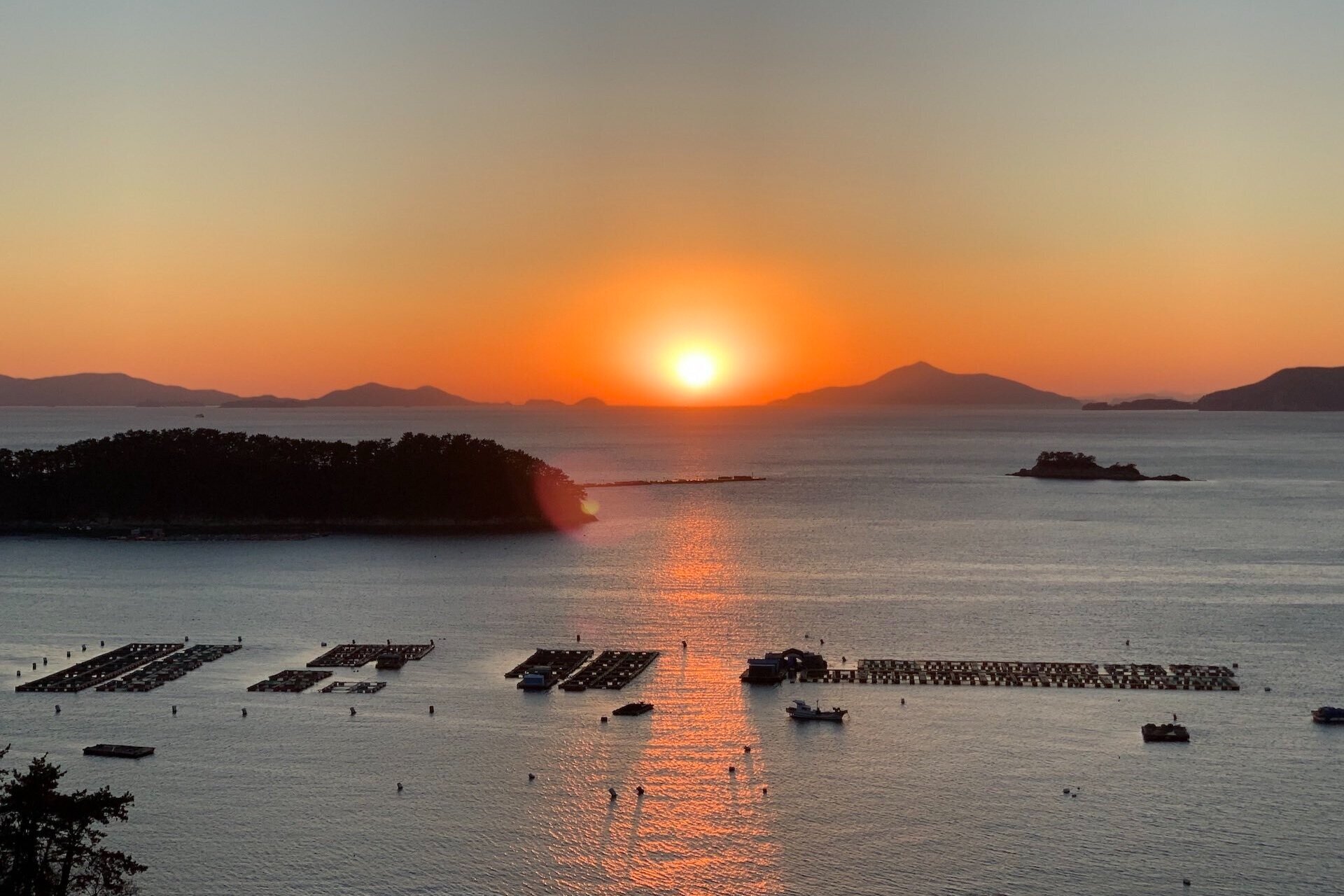
The eating:
충무 김밥 (Chungmu Gimbab)
Here is another non-ordinary-but-not-that-special gimbab we ate on this trip. It's the thing you have to eat in Tong-yeong, but you can also find this in Seoul as well. It’s just easier to get it in Tong-yeong.
This gimbab is like a DIY gimbab, where you have to assemble all the ingredients by yourself. It even came in a tray with three different blobs of things so you can get messy with it. The rice rolls is a tubular, bitable size and comes with two specific side dishes: kimchi plus fish cake and squid in a red pepper sauce thingy. It’s delicious and worth the try!
Sea Squirt Bibimbab
Oyster Soup
Oyster
Okay, Tong-yeong oysters are the real reason we wanted to visit Tong-yeong and we believe they deserves their own special section of this post.
Fresh seasonal oysters?! It’s the secret code to our hearts, it’s the whistle to our ears, it’s the oasis in the (sightseeing) dessert— we simply can’t resist them. We will find a way to make time for fresh seasonal oysters. Because, from our small but solid amount of experience, oysters are always better when eaten fresh.
November to February is the season for oysters in Korea, and of course we were not fools to miss this great opportunity when Tong-yeong is famous for its oysters.
We are no experts on which family they are from or how they are brought up in the world, but one thing is clear: there is a whole diversity of kinds of oysters in this world.
I’m not quite sure where Tongyeong’s oysters fall in the larger oyster family, but the one we bought was something we had never encountered before. Like most of our groceries, which are well manufactured and grown into a perfectly marketable albeit homogenous product, we can only get our hands on a small fraction of the variety that exist. Tong-yeong has a veritable smorgasbord of oyster varieties. Thus, we definitely needed to try out this rare kind— triploid oysters.
Upon my research, triploid Pacific oysters were also known "sexless" oysters and biologically modified. After this moment, oysters were no longer a one-bite delicacy that you gracefully slide into your mouth. The ones we had were 4 years old and HUGE. The size was almost disturbing; I can only describe the size as “as big as my hand.” We ignored the lady’s advice on steaming them because we wanted to eat them raw. We bought shallots and sherry vinegar to make a mignonette sauce for the occasion. For 2kg it was a steal! 15,000KRW !!!!! Crazy.
It took us 2 hours to shuck 7 oysters but it was well worth it. It’s one of our top oyster experiences! We do recommend triploid Korean oysters but not shucking with a regular knife.
Other things if you have time:
The #uglydelcious 시락국 and 서호시장 (Seoho Market)
In between the fishes and people there are always great snacks and bites to enjoy in markets. Seo-ho market is less busy than the big central Tong-yeong market, and it has all the same things. But if you want to buy some oysters we recommend the central market. We went to Seo-ho market because it was close to where we were staying and had an excellent restaurant or two, according to the Internet. 시락국 is another regional food that you could try if you have time. Like many other Korean foods, it's really hard to explain what it actually tastes like. It’s nothing fancy but simple, warm food. The crazy number of side dishes is a perks of this particular place.
Address: 경남 통영시 새터길 42-7 (42-7, Saeteo-gil, Tongyeong-si, Gyeongsangnam-do)
Opening hours: 05:30 ~ 18:00
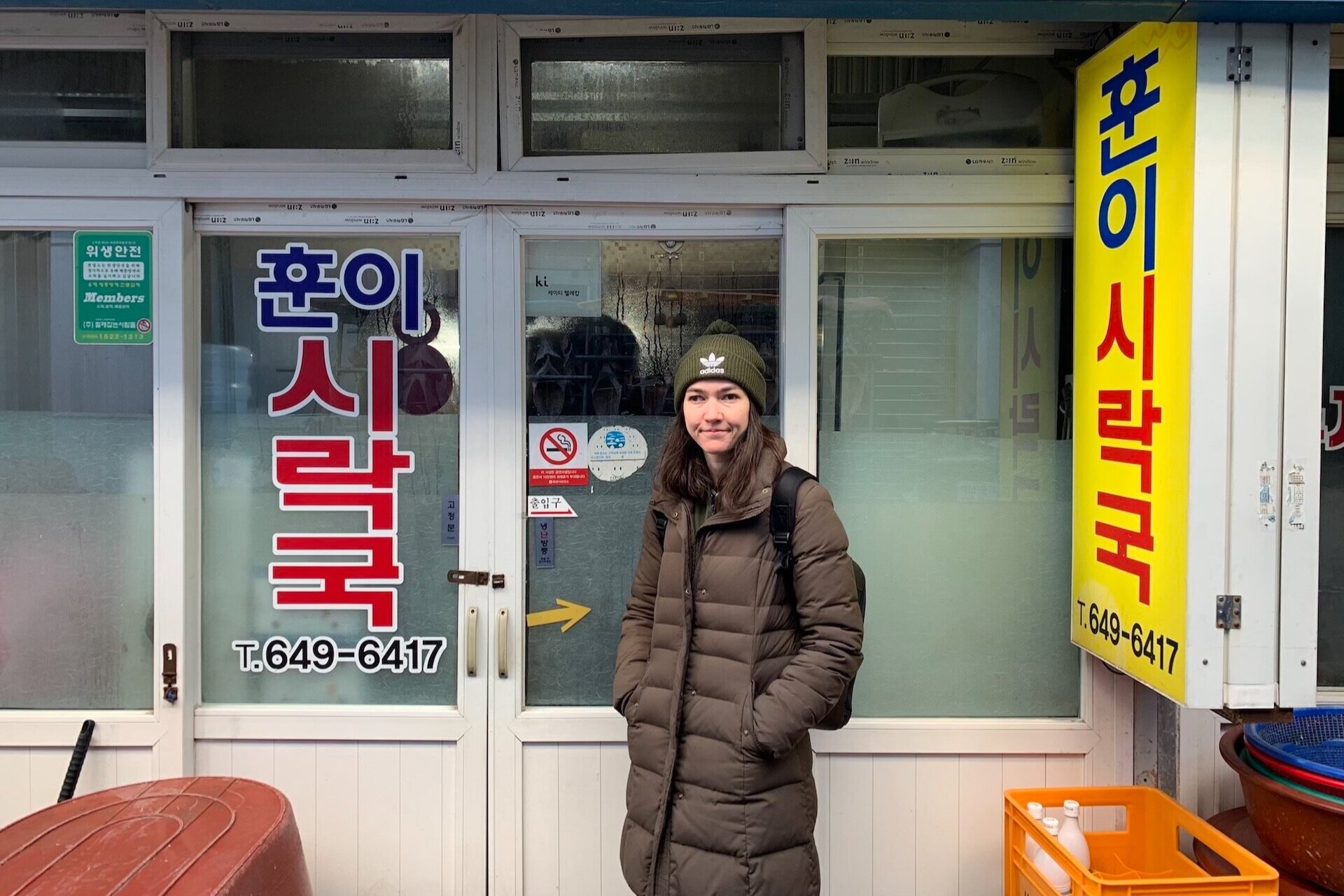
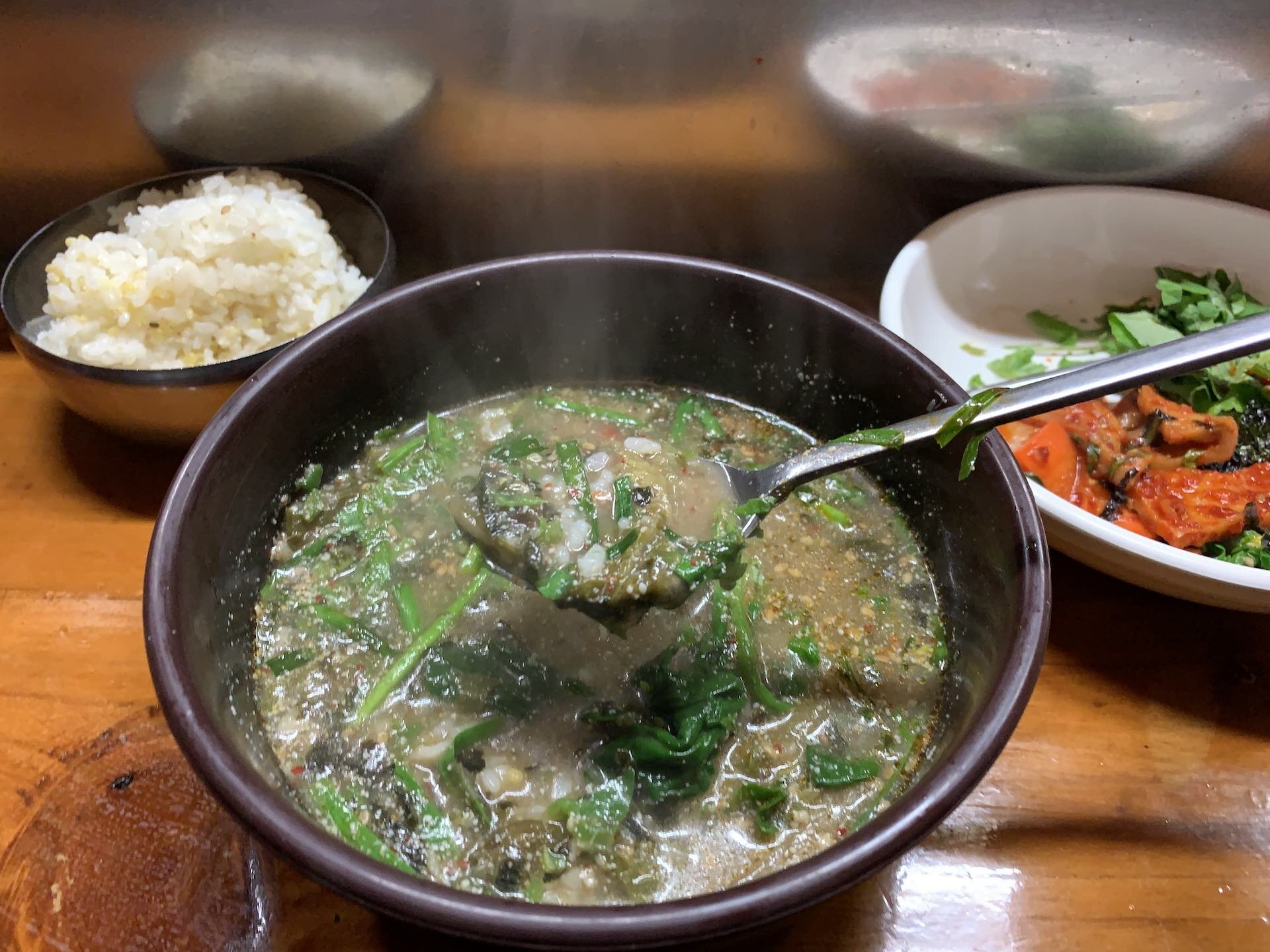


How to Get There
There are no railways yet in Tong-yeong, so your only choices are either by bus or by car. We chose bus for this trip.
There is only one bus station in Tong-yeong so there is no hassle figuring out which one you are going to arrive at or depart from, but Seoul is a different story. There are multiple bus terminals, various bus routes, and different bus types that you can take. It's a bit confusing so we thought we’d lay it out here.
The bus ride to Tong-yeong will take 4 hours 10 minutes and will stop for a 15 minute break in between. Which bus station you leave from, the time you leave, and the seats you take will determine the ticket price.
Seats and bus types. There are always 2 types of buses you can choose from: Premium and Regular. The official term might be different for each bus companies, but usually premiums are called 우등.
What's the difference? The major difference here is the comfort. Premium seats are much comfortable and wider. It’s almost like a lounge chair. We recommend this for the 4 hour ride.
The first route: Departing from 고속터미널 경부선 (Express Bus Terminal - Gyeon-bu route)
This bus terminal is the biggest bus terminal in Seoul. It used to run all of the bus routes, so most of the buses depart from here. It’s also a subway station that connects three lines: lines three, seven, and nine. As a result, it’s crazy busy and can be quite confusing. It has the most routes of all three bus terminals, with buses to Tong-yeong departing every 30 minutes.
Price will vary depending on the train time, as well. The night buses are bit pricier than the regular ones, due to human rights regulations. Night busses run between 02:00 and 04:00.Premium bus: 32,400 KRW / night bus 35,600 KRW
Regular bus: 21,800 KRW / night bus 23,900 KRW
The second route: Departing from 서울 남부터미널 (Seoul Southern Intercity Bus Terminal)
This terminal is few blocks away from the 서울 고속 터미널. It’s smaller and this route takes 4 hours 30 minutes, slightly longer because it passes through a geographically traffic-y area. It has less options than Express Bus Terminal, but it you live close by this might be the option for you. It’s certainly easier to find the right bus here than at the Express Bus Terminal.
Premium bus: 30,000 KRW / night bus 33,000 KRW
Regular bus: 23,100 KRW / night bus N/A
The third route: Departing from 동서울 버스터미널 (East Seoul Bus Terminal - Gyeon-bu route)
This is the bus terminal for people who are living in the East side of Seoul city. Only three times per day are available to go to Tong-yeong.
Premium bus: 30,000 KRW / night bus NA
Regular bus: N/A
How we got around in Tongyeong
Tong-yeong is a fairly small city. They do have public buses you can take around the city and there are tons of taxis. Depending on what you would like to see, most of the main tourist attractions (not what we saw) is within a walkable distance from city central, so you might not need a car for it. But for us, this trip was cold and there were a few places that could only be reached by cars.
We used Socar, a car sharing and renting service for this trip. I prefer this rental company because you can rent it by the hour or by the day. Also, I don’t have to talk to a person on the phone. I’m not sure if you can use Socar with an international drivers license or not, but if we had to guess we’d guess probably not.
Where we stayed
Truthfully, Tong-yeong is not the the hottest tourist destination. There aren’t much accommodation options here. We used Airbnb again to book a room in a Hanok traditional house that was fairly good value, even if it did mean we could hear everything the neighbors’ kids were saying before bedtime.
There was another hotel that was a contender called Turtle ship hotel. Yes, Tong-yeong doesn’t joke around with their symbol, the turtle ship.







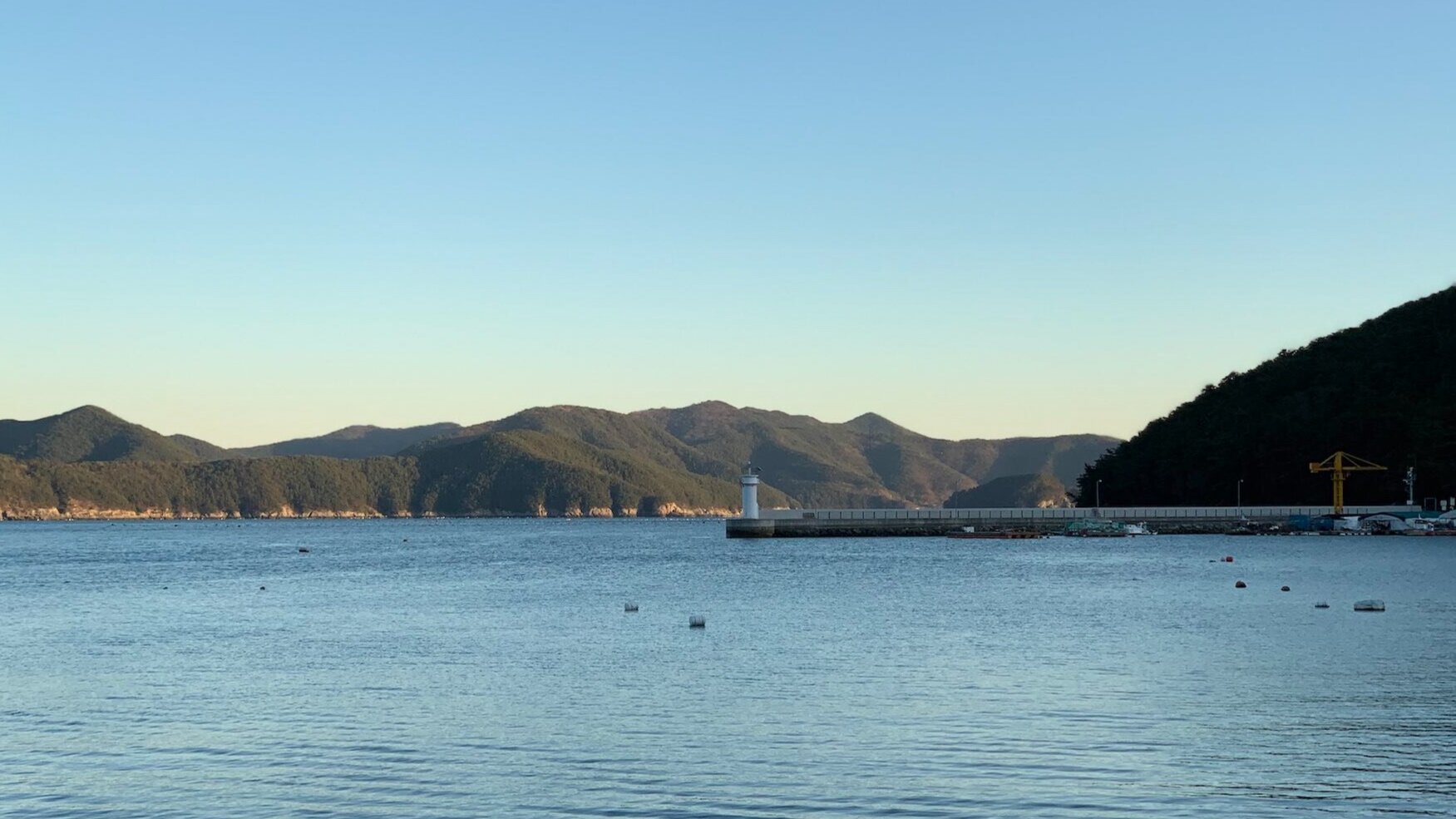





Best place to get oysters in South Korea